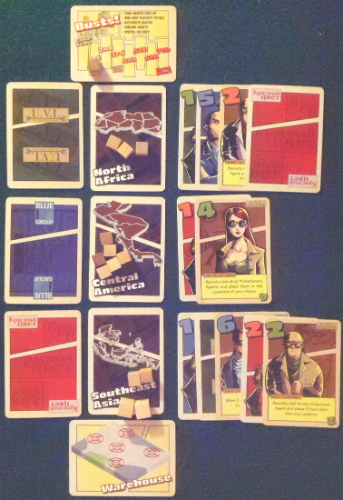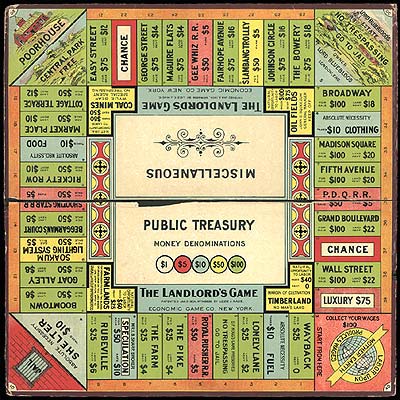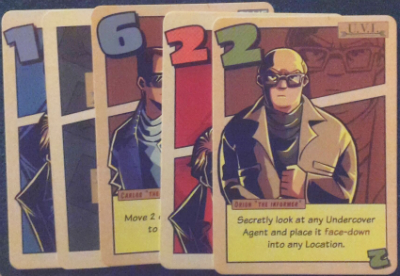Buongiorno Agent ___Marrano___,
I regret that we could not meet in person for your post-orientation field mission. As you will soon learn, this is commonplace in our line of work. We have little time for frivolity.
From your briefings, you should know that there are around 700 million small arms weapons in the world for civilian use, and not all of those wind up in the hands of responsible people. Even taking into account that the Americans account for almost half that number, it still leaves a lot of weapons in hotspot locations of concern. Make no mistake about it agent: we here mean to disrupt illegal traffickers’ supply lines and prevent them from profiteering off making unstable regions even worse.
Your current dossier outlines out latest target. Read it over during the flight. We will meet up in _Cairo_ at __0900__ local time, where your task begins in earnest. Other agencies will likely be in pursuit of this target as well, but we mean to be the one to catch him.
Angelo Torrisi
Director of Field Operations
C.I.V
The Premise
The notorious arms dealer, known only as the Merchant of Death, is on the loose. Players take on the role of international law enforcement agents looking to make a dent in their enemy’s operations and lay claim to having the largest pile of confiscated weapons when time runs out.
The Rules
As Gunrunners is a resource-light game, it takes little time or effort to get underway. The play area is laid out vertically, with one Location card used per player. The Bust card (the turn tracker) is placed above the Locations, with the Warehouse card placed below. Each Location starts with four weapons crates.
Each player is then given a colored set of 14 Agent cards. Agent cards consist of values from 1-6, and six of the Agent cards, called Special Operatives, come with unique abilities when used.
To begin, each player assigns one of their 1-value Agents face down to the left of a Location then randomly draws a starting hand of five cards. The first player is determined randomly.
Each player’s turns takes place over four phases: Deliver Weapons, Deploy Agent, Special Ops, and Bust. First, the player rolls a die. If the result of the die is the same or lower than the number of Locations (for example, rolling a 2 with four Locations), they place one crate from the supply – plus any crates on the Warehouse card – on that Location. If the die roll exceeds the number of Locations, the player places a crate from the supply in the Warehouse instead.
Next, the player deploys one of their Agent cards and draws a replacement. This can be done in two ways:
- Play the card as a Probationary Agent. The player reveals a face down card of any player besides themselves to the left of a Location and moves it to the right side of that Location.
- Play the card as an Undercover Agent. Undercover Agents are deployed face down directly to the right side of the Location. A player may only have one Undercover Agent in play at a time.
Then, if the card revealed by taking the Probationary Agent option has a special ability, that card’s owner – not the active player – may resolve its ability now.
Lastly, if a Location has four or more face-up cards, a Bust occurs. Any Undercover Agents at that Location are revealed, and each player totals the values of their cards there. Crates are awarded to the players according to their totals, with each player receiving half of the remaining crates at the Location as the person before them. The Agent cards are then discarded, Locations are awarded some new crates, and the next player takes their turn.
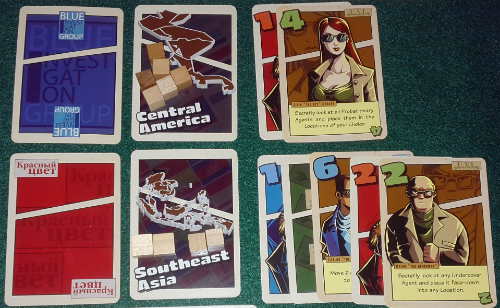
The bottom Location will have a Bust this turn thanks to Red placing a card and causing a fourth face-up Agent to be placed on the right side.
Gunrunners ends after the seventh Bust. The player with the most weapon crates at that point is the winner, demonstrating their ruthless tenacity and skill at trying to catch the Merchant of Death.
Everyone else has been signed up for several rounds of mandatory field training seminars.
Searching For Identity
There is no mistaking that game design has changed considerably in the last few decades. What was considered a reasonable mechanic 30+ years ago may not be considered nearly as feasible now. As the player base continues to evolve, so too do the being games created. There is a direct imperative on the part of game designers to remain relevant to their audience, continually striving for new and interesting methods to keep and hold the attention of gamers. And by any metric it has been wildly successful. The last decade particularly has seen profound advances in game design and game theory, creating hundreds of games that are equally memorable, entertaining, and well-crafted.
The progression of theme has not always run in parallel with that of mechanical design, however. Traditional board games, for example, largely valued theme over function. In time, many game designers – particularly those in Europe – were spurred into making games that emphasized the mechanics of the game instead.
These two paths led to the overall genres of games we know as Ameritrash and Euros. For a while it was very evident which category a game fell into, and in many cases you still can. Recent years, though, have shown that these lines are no longer mutually exclusive, and that more and more games exist as a blend of both distinct styles.
Such is the case with Gunrunners. On the one hand, the game displays many of the benchmark traits of an Ameritrash game. There is a high degree of randomness to it due to crate allocation and card placement, and the manner by which cards get revealed each turn relegates players to a turn-by-turn approach. On the other hand, the theme to Gunrunners feels somewhat disconnected from what’s being played out. While the artwork to the game is decent enough, some of the named Special Operative characters are a little out of place from the international agencies each player is supposedly representing. (There’s a Seamus in the “Russian” player’s cards, for instance.)
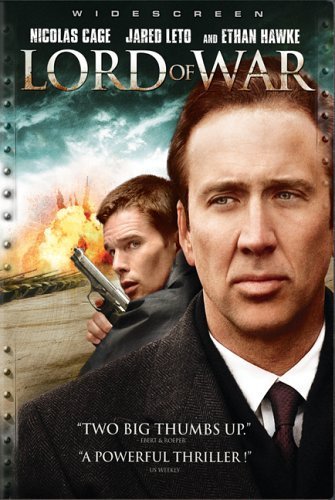
In Gunrunners, we’re all
Ethan Hawke.
Even more noteworthy is that the visual components aren’t very evocative at all to the mission at hand. Players are acting as law enforcement agents trying to stop illegal gun shipments, and yet the only actual picture of a gun anywhere is in the game’s logo. It’s understanding of the desire not want to dramatize illegal arms dealing, but their absence from any in-game reminders detracts from the game’s purpose. The result is a theme feels more stapled on to the mechanics than one that accentuates it – a trait seen in many traditional Euro games.
Granted, for most these thematic issues are minor and don’t actually affect the physical gameplay. Not so for Immersionists; they’ll likely be discouraged in Gunrunners by what they’ll see as some thematic missteps. Considering the game is already relatively simple and has a light theme to begin with, it could push them away from multiple playthroughs.
Putting The Pieces Together
Gunrunners is not designed to be a highly complex or lengthy game, with most sessions lasting around 30-40 minutes even with four players. The rules to the game are exceptionally well explained, and it avoids inviting rules loopholes or confusion that can come about with similar lightweight games. In that, it’s a very well contained game system that can be taught and understood quickly. That doesn’t mean the game is ideal for everyone, though.
For one, Gunrunners is pretty random. This doesn’t have to do with the die roll each turn (although for some it can evoke memories of Roll And Move games). The die is simply used to determine where the new crates are placed each turn for resource purposes. Rather, the true randomness comes from a combination of two factors.
First is the amount of hidden information in the game. Most of the time when you’re playing a card, you are taking the Probationary Agent action. Yet aside from knowing which player’s card you’ll be revealing, you don’t know what the card will do until it happens. It may simply be a value card, or it could be a special action card that affects your chances at winning that Location. Second, because of the abilities of said action cards, such as moving card placement around, it makes planning beyond the current turn particularly difficult.
Either factor by themselves is one thing, but the combination of both will easily repel Tacticians. Gunnrunners is a game that will frustrate them and should be avoided. Furthermore, Architects are usually wary of games that are too random or too light on substance, and since this game is a mix of both, Gunrunners isn’t likely to be a game they’ll get too excited over either.
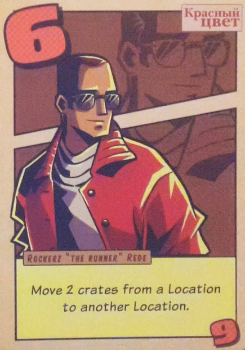
A Special Operative card,
“The Runner”
On the other end of the spectrum, Gunrunners is a great game for both Socializers and Daredevils. Gunrunners falls into a subcategory of Filler Game we like to call “Coffee Table” games. These are games with a casual atmosphere that allows you to be social without having to heavily watch and strategize between your turns. In this case it’s mostly because you can’t.
For Daredevils that isn’t necessarily a bad thing, as it allows them to approach how and where to play their cards in whatever manner they think will help them the most without worrying about long term repercussions. (Well, or to just see what happens.) Moreover, the game can be played as quickly or as leisurely as players wish, allowing the more social gamers to control the pace of the game instead of the other way around.
Contrasting with all of the others, Strikers are solidly in the middle with regard to Gunrunners. This group appreciates that they are competing with the other players and that there is a clear objective, but they’re also likely be a little vexed by the degree to which hidden information can alter the results of a turn or if their play group opts for a more casual playthrough. There is enough in Gunrunners for Strikers to enjoy that they certainly should give the game a try, but whether it becomes they will walk away appreciating will ultimately depend on their other archetype tendencies.
The Takeaway
There are times when it feels like Gunrunners strives to be something more robust, and it can tempt players to want more out of it as well. Alas, it is a siren song, for only that way lies discontentment. Instead, Gunrunners should be lauded as a light and easy to understand game that scales well depending on the number of players and really finds its stride as a casual card game. It allows players to make decisions without having to plan too far ahead or focus too intently on a lot of moving pieces. This doesn’t make a player’s actions are irrelevant though, as a well-laid card revealed at the right time can be quite rewarding. You just might not have control over when that happens. Sort of like real law enforcement. Gunrunners is genially straightforward to play, be it with family members or your local gamer group. If this sounds like a profile that suits you, then be sure to set your sights on Gunrunners.
Gunrunners is a product of Dr. Finn’s Games.
Cardboard Republic Snapshot Scoring (Based on scale of 5):
Artwork: 3
Rules Clarity: 4.5
Replay Value: 3
Physical Quality: 3.5
Overall Score: 3

